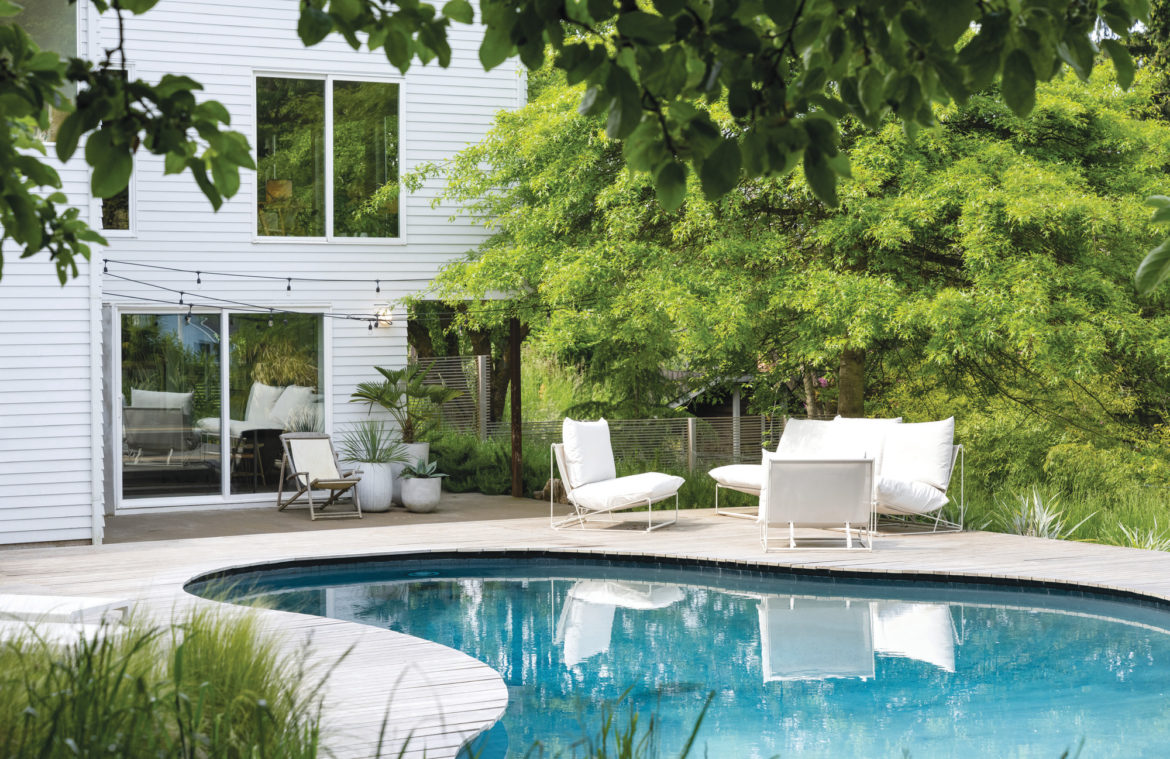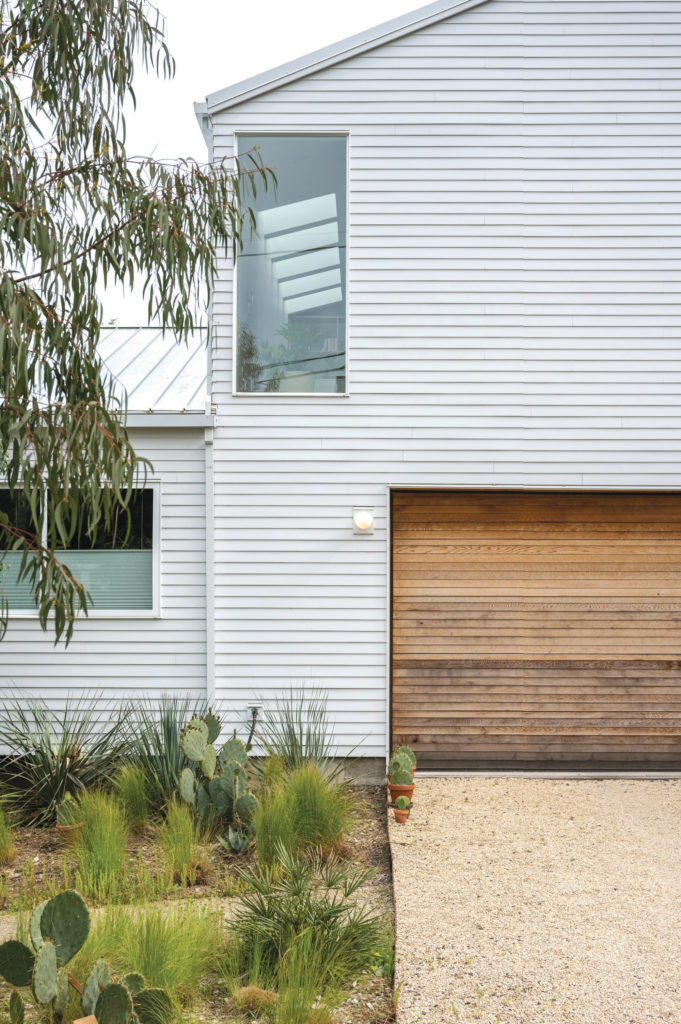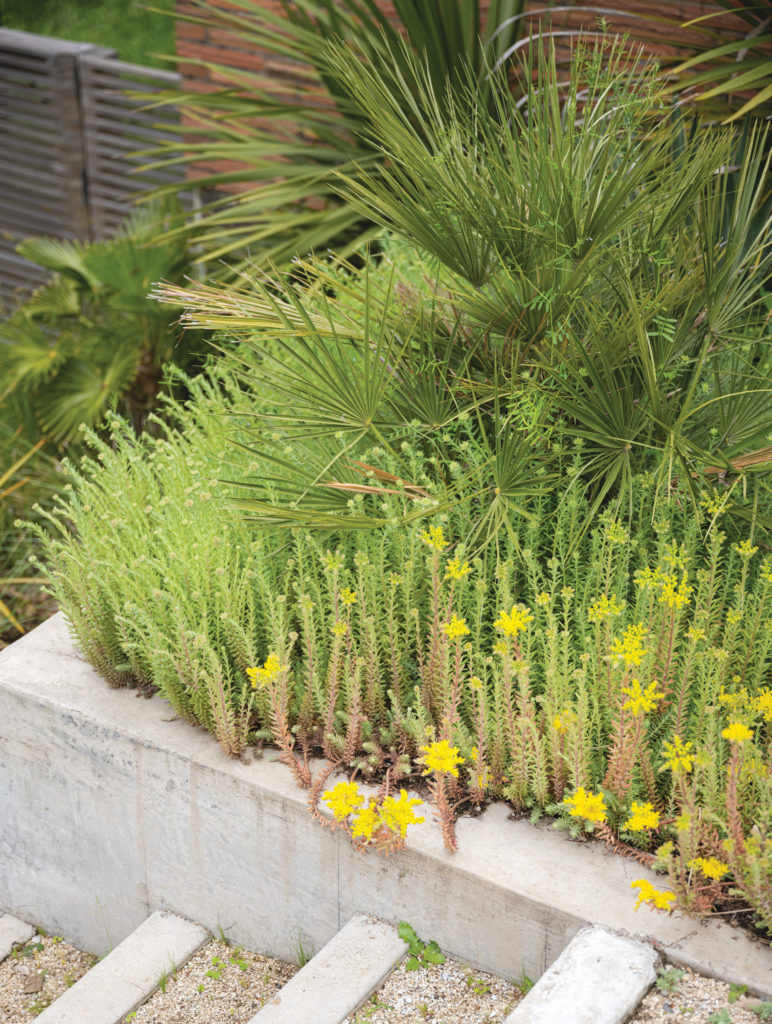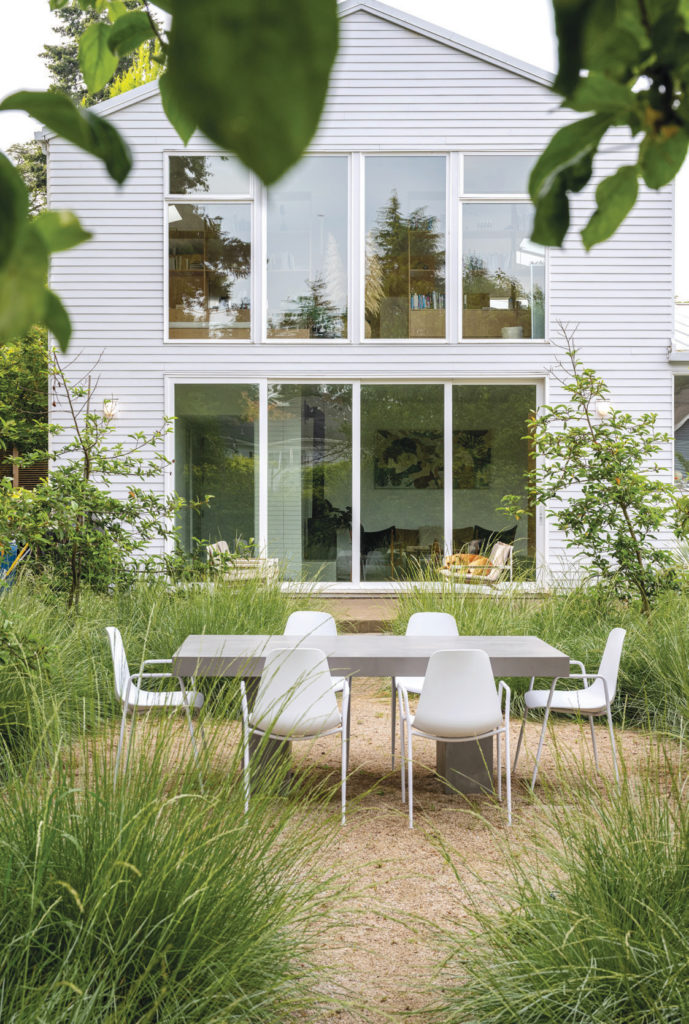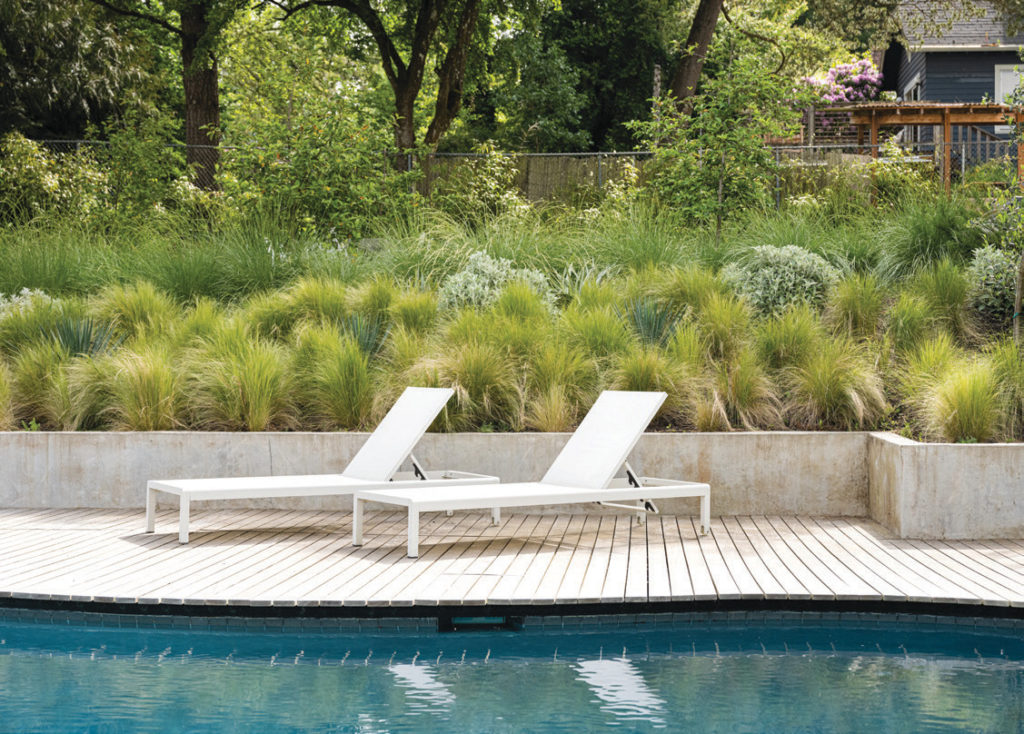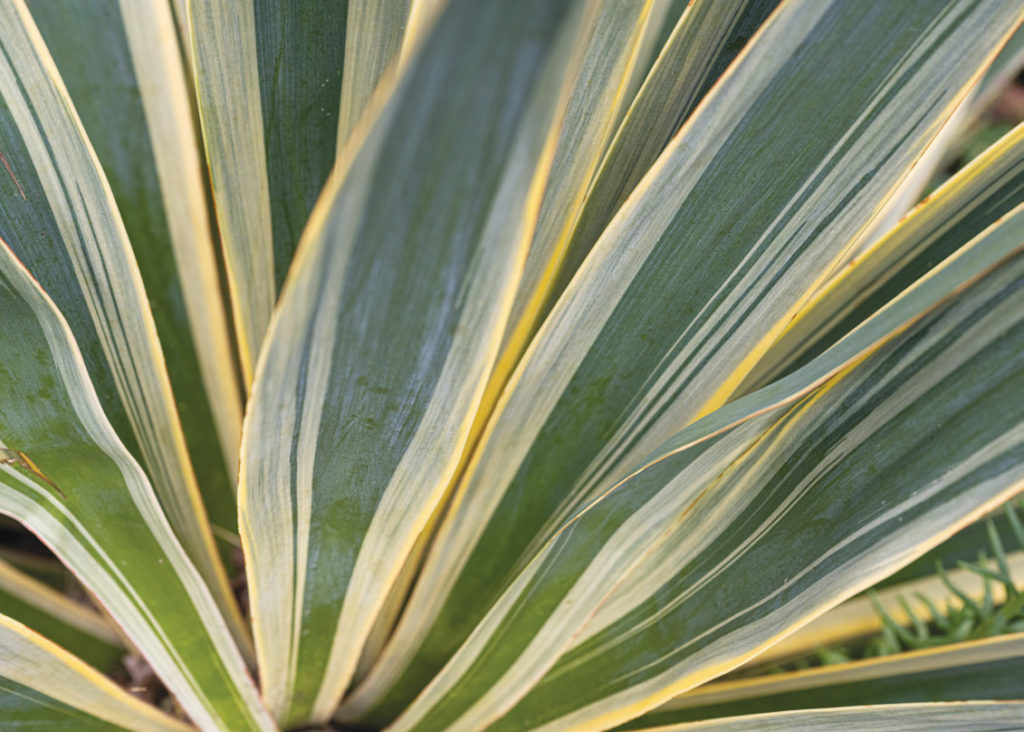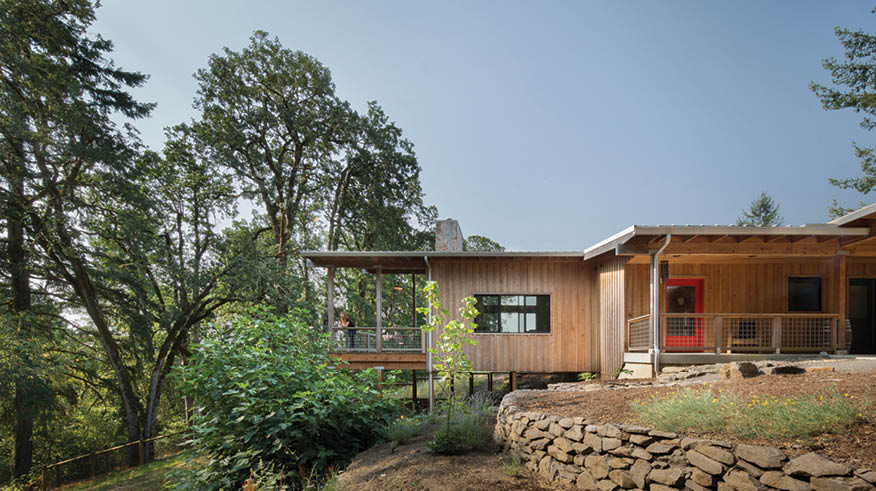A landscape architect takes it slow redesigning her yard to maximize enjoyment in the creative process
written by Melissa Dalton
photography by Elijah Hoffman
Passing by mounds of Mexican feather grass rippling in the breeze, the crunch of decomposed granite under foot, there is a feeling of calm walking up to Connie Migliazzo’s house in Southwest Portland. That’s relatively new for the 1953 abode, which before, had a yard as common as they come: lawn, and more lawn at the front, side and back. “There were some intermittent random plants, a crumbling lava rock wall, but mostly just lawn,” Migliazzo said. “I wanted to do my own thing.”
Migliazzo, a landscape architect and founder of the firm Prato, relocated with husband, Jonathan Kadish, a data scientist, from Berkeley, California in 2018. Ever since, they’ve been fixing up the interior of the Mid-century home with Helland Architecture—“It wasn’t a cool Mid-century before,” Migliazzo promised—while the large, almost half-acre lot, has been the landscape architect’s domain. “It’s really fun that it’s both my house and it’s also a proving ground for my business,” Migliazzo said. “I get to use it to experiment.”
After the house construction wrapped, the front yard was “a giant mud pit,” which Migliazzo transformed into a modern and serene entry garden. During the remodel, the house’s dated exterior siding was replaced with a crisp white treatment, accented by a custom wood garage and entry door, making for an elegant backdrop for the earthy yellows, dusty blues, and sage greens in the new plantings and hardscape.
“I like to keep my palette really minimal,” Migliazzo said, both in the color range and plant specimens. “I want there to be enough biodiversity and different textures, but I find that bigger swaths of one species have a more modern effect.” To that end, the front yard now has a “wavy ocean” of grasses, with a higher dwarf Pampas grass lining the street, and a few Eucalyptus trees arcing up for sculptural contrast. The couple replaced the chunky lava rock wall with streamlined concrete retaining walls inset with planting beds, with steps leading down to a cedar fence custom-designed, and built, by Migliazzo.
Many of the plant picks tend to be, while not necessarily native, adaptive to the increasingly hot Portland summers and drought tolerant. “I have hardy bananas, yuccas, palms and agaves. People are always surprised to see these,” Migliazzo noted. “But choosing plants that don’t require a ton of summer water is how I like to approach my projects.” The designer notes that success with such picks requires knowing which varieties will be okay with the cold, wet winters, and timing the install just right. “You have to be careful about what soil you plant them in, and what time of year you plant them,” Migliazzo said. “Like with agaves, it’s better to plant them in the spring, so that they get the dry summer to root out and establish.”
In the backyard, the centerpiece is the pool, which was there when the couple bought the house, albeit surrounded by more crumbling concrete and the ubiquitous lawn. First, Migliazzo terraced the large yard, creating an upper dining area right off the house, with a lower terrace for the pool, separated by a gently sloping planting bed covered in textural evergreens. “It just really makes me happy when you’re in the depths of depressing winter, to look outside and see plants that are lively and green,” Migliazzo said.
At the pool, the couple removed the existing hardscaping and laid down an Ipe deck themselves, using narrow planks that emphasize the organic, Mid-century shape. Ipe is known as a dense and durable tropical hardwood that’s perfectly suited for outdoor features. It just took a while to install. “We had to pre-drill every hole,” Migliazzo said.
After getting the deck down, the couple later added benches and a sunning platform that conceals a hot tub, making their backyard a popular spot among friends. “My parents had a pool and loved to entertain, and I really wanted to create a house like that: a place where people gathered,” Migliazzo said. “Being surrounded by friends and food and community is really important, and I think the pool just helps bring people together.”
The rest of the year, they leave the pool uncovered even when not in use, as it’s generally warm enough to do so. Migliazzo had the pool interior refinished so the water appears, less the artificial turquoise of its Mid-century days, and more like a naturalistic pond, which she can appreciate from the windows over the kitchen sink.
Of course, there are future projects in the works, both big and small, like an empty expanse prepped for an ADU, and vegetable beds through which to teach her children about gardening food. Migliazzo is perfectly happy with not having everything done yet: “It’s a long process and continues to be, but I like it that way. I get to enjoy pieces of it at a time and then rethink things. Landscapes are living, so it’s a constantly evolving project.”


